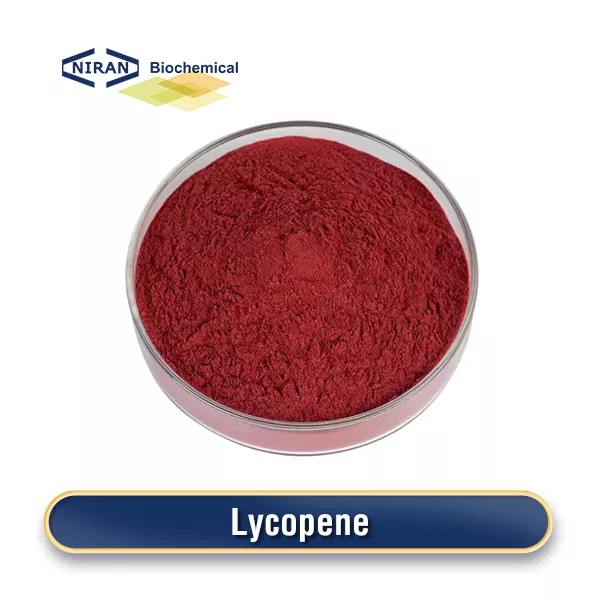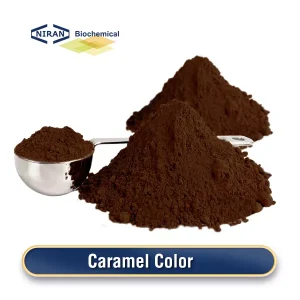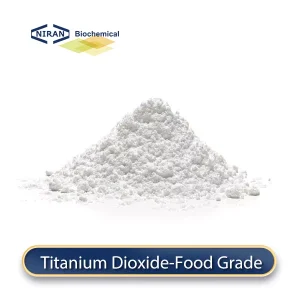What is Lycopene?
Lycopene is a red pigment and a carotenoid that can be found in plant-based diets. It looks like a tiny crimson powder. It has a significant antioxidant action and is widely employed in the food, health care, cosmetics, and other industries, although lacking the physiological activity of vitamin A.
In China, the preparation processes of food-grade lycopene mainly include the following: solvent extraction, supercritical fluid extraction, enzymatic hydrolysis and hot water extraction.
Lycopene is extracted using the solvent extraction method using organic solvents (ethanol, n-hexane, etc.). Due to its low cost and maturity, the technique is frequently utilized in the industry.
However, the supercritical fluid extraction method uses supercritical carbon dioxide as a solvent, which can extract high-purity lycopene at a lower temperature and without solvent residue, which makes it gradually become the mainstream in the application scenarios that pursue high quality and environmental protection.
The enzymatic hydrolysis method destroys the tomato cell wall through the action of specific enzymes to improve the extraction efficiency, and is often used in combination with other extraction methods to optimize the extraction effect.
Although the hot water extraction method is simple to operate, it usually has a low extraction efficiency and is mainly used in laboratory research or small-scale production. In general, with the increasing requirements for high purity and environmental protection, supercritical fluid extraction has broad application prospects in the domestic market.
Recommended dosage:
| Food name | Maximum usage(g/kg) |
| Tomato paste | 0.5-1.0 g/kg |
| Tomato juice | 0.1-0.5 g/kg |
| Tomato concentrate | 0.5-1.0 g/kg |
| Tomato sauce | 0.5-1.0 g/kg |
| Pasta sauce | 0.5-1.0 g/kg |
| Canned tomatoes | 0.1-0.5 g/kg |
| Fruit drinks | 0.1-0.5 g/kg |
| Fruit yogurt | 0.1-0.3 g/kg |
| Candy | 0.1-0.3 g/kg |
| Energy drinks | 0.1-0.3 g/kg |
| Dietary supplements | 0.1-0.5 g/kg |
| Energy bars | 0.1-0.3 g/kg |
| Milkshakes | 0.1-0.3 g/kg |
| Protein drinks | 0.1-0.3 g/kg |
Lycopene has a wide range of uses
- Natural pigment: Lycopene is a natural red pigment widely used in food and beverages, providing a red or pink color that can increase the visual appeal and market competitiveness of food.
- Effect of antioxidant: Lycopene is a potent antioxidant that helps shield cells and tissues from oxidative stress by scavenging free radicals and minimizing cell damage. It plays a role in preventing lipid oxidation and delaying food aging, and also has a positive effect on maintaining health.
- Improve food stability: The antioxidant properties of lycopene can also help delay lipid oxidation in food, improve the shelf life and stability of food, and reduce food deterioration and odor generation.
- Nutritional addition: As a nutritional additive, lycopene is often used in health products and functional foods to provide additional nutritional value and enhance the health benefits of the product.
User asked question:
Q: How is the domestic market for food-grade Lycopene? Does the global price fluctuate?
A: So far, food-grade lycopene has shown a steady growth trend in the domestic market. Consumers’ increased attention to health and natural nutrition has driven the expansion of the functional food and health products market, among which lycopene, as a powerful antioxidant and natural pigment, has received widespread attention and application.
According to market research data, the annual sales of food-grade lycopene in the domestic market are expected to reach approximately RMB 1 billion in 2024, with an estimated annual compound growth rate of approximately 15%.
Over the past few years, there have been some swings in the price of lycopene on a global scale. This fluctuation is mainly affected by multiple factors such as global tomato production, weather effects, transportation costs and market demand fluctuations. Specifically, the price of lycopene may be relatively stable when the supply and demand are balanced, but may fluctuate in the short term when affected by unpredictable factors.




